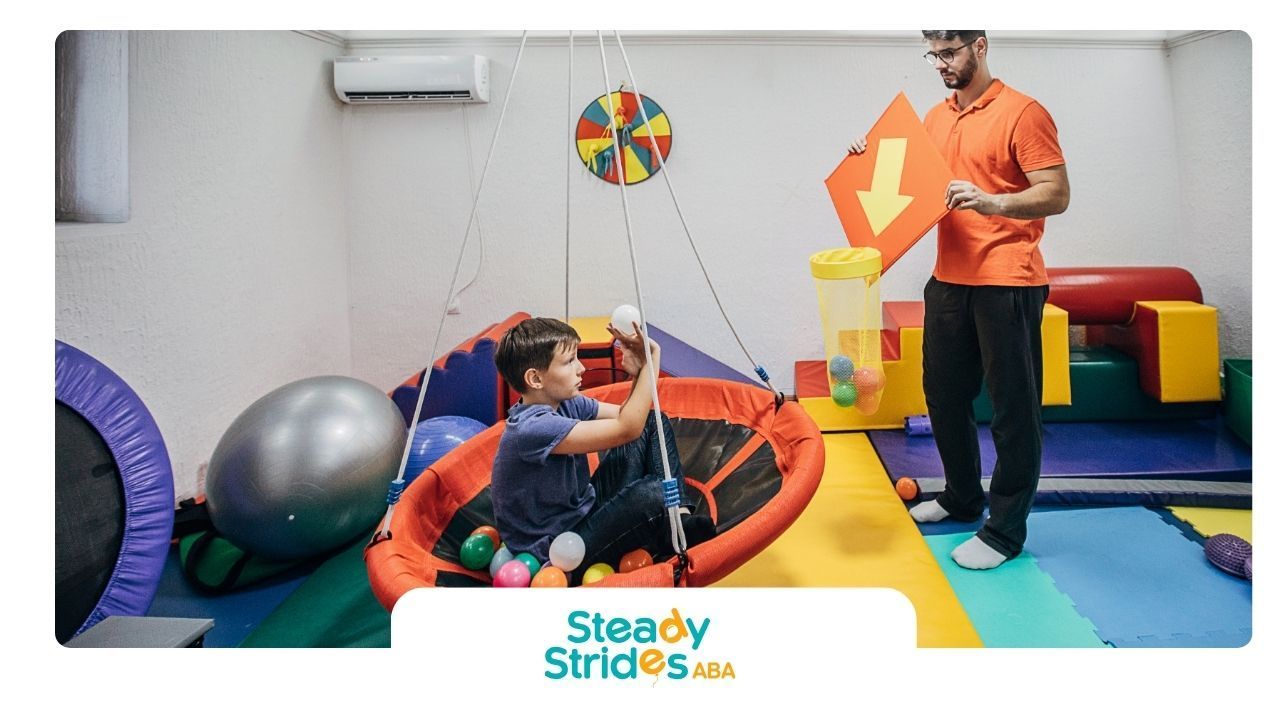Ensuring your child's safety is a top priority for every parent. For children with autism spectrum disorder, learning how to navigate the world safely can present unique challenges. Fortunately, Applied Behavior Analysis (ABA) therapy offers a powerful and effective framework for teaching these essential skills. By using proven techniques, ABA helps children build safety awareness, learn to assess risks, and gain the confidence needed to interact with their community securely. This guide will explore how ABA can equip your child with vital safety skills.
Understanding Safety Skills in ABA Therapy for Children with Autism
Applied Behavior Analysis (ABA) provides a scientific and structured path to teaching critical safety skills to children with Autism Spectrum Disorder (ASD). The therapy focuses on breaking down complex behaviors into simple, understandable actions, which helps improve safety awareness. Through consistent practice and positive reinforcement, ABA therapy makes learning these skills effective and engaging.
This approach is not just about memorizing rules; it’s about understanding and applying them in real life. Let’s explore what safety skills are, why they are so important, and how ABA therapy plays a fundamental role in building a foundation for a safer, more independent life.
Defining Safety Skills and Their Importance
Safety skills are the actions and knowledge a person needs to prevent harm and respond effectively to dangerous situations. For children with autism, these essential skills can range from understanding not to touch a hot stove to knowing how to cross a street safely or what to do if they get lost. These skills are fundamental to their independence and quality of life.
The importance of these skills cannot be overstated. Without a solid foundation in safety, children may be more vulnerable to accidents or exploitation. Teaching safety concepts in a clear, structured way helps empower them to navigate their surroundings with greater confidence and security.
ABA therapy excels at this by breaking down abstract safety ideas into concrete, manageable steps. By integrating these lessons into daily routines, therapists and parents can help children practice and master these skills in familiar contexts, making the learning process natural and effective.
The Role of ABA Therapy in Building Safety Awareness
ABA therapy is instrumental in building safety awareness by using systematic and individualized teaching methods. A core component of this is Behavioral Skills Training (BST), a four-step process involving instruction, modeling, rehearsal, and feedback. This active learning approach allows your child to see, practice, and receive guidance on performing a safety skill correctly in a controlled setting.
Behavior analysis helps identify which skills are most critical for your child and how to teach them most effectively. For example, therapists can model how to respond to a stranger or practice what to do during a fire drill. Through repetition and positive reinforcement, these responses become more natural.
The ultimate goal is to foster independence and ensure your child can generalize these skills to various real-world situations. By building a strong sense of safety awareness, ABA therapy empowers children to make safer choices, whether they are at home, at school, or in the community.
Common Safety Challenges for Children with Autism in the United States
Children on the autism spectrum often face unique challenges that can make learning and applying safety rules more difficult. These challenges can stem from differences in communication, social understanding, and sensory processing. For instance, a child might not interpret a caregiver's urgent tone as a sign of danger.
Sensory sensitivities can also play a significant role. A child who is sensitive to loud noises might run away from a fire alarm instead of following an evacuation plan. Recognizing these specific challenges is the first step in creating effective strategies to address them and prevent dangerous situations.
Some common safety challenges include:
- Wandering or Elopement: A tendency to leave a safe area without permission or supervision.
- Difficulties with Social Cues: Trouble identifying who is a "safe" stranger (like a police officer) versus a potential threat.
- Lack of Danger Awareness: Not understanding the risks associated with things like traffic, water, or household chemicals.
- Communication Barriers: Inability to effectively communicate pain, fear, or the need for help.
Foundational Principles of ABA for Safety Skill Development
Applied Behavior Analysis relies on several foundational principles to effectively teach essential skills, including those related to safety. At its core, behavior analysis focuses on understanding how behavior works and how it is affected by the environment. This scientific approach allows for the development of targeted and effective teaching methods.
By using principles like reinforcement and data-driven adjustments, ABA therapy creates a structured learning process that is tailored to your child's individual needs. These methods help make abstract safety concepts concrete and achievable. We will now look at the specific concepts and strategies that make ABA a powerful tool for safety training.
Key Behavioral Concepts Used in Teaching Safety
Several key concepts from behavior analysis are applied when teaching safety skills. Positive reinforcement is one of the most important. When a child correctly demonstrates a safety behavior, like looking both ways before crossing a practice street, they receive a reward. This reward could be praise, a favorite toy, or a fun activity, which makes them more likely to repeat the behavior in the future.
Data collection is another crucial element. Therapists meticulously track your child's progress to see which strategies are working and where more support is needed. This data-driven approach ensures that the teaching plan is always tailored to your child’s learning pace and evolving needs, making the instruction as efficient as possible.
Furthermore, teaching your child to recognize social cues is another vital component. ABA can help a child differentiate between a friendly greeting and a potentially unsafe interaction by breaking down body language and tone of voice into understandable parts.
Applied Behavior Analysis Approaches for Health and Safety Skills
Applied Behavior Analysis utilizes several specific teaching approaches to promote the acquisition of health and safety skills. One common method is Discrete Trial Training (DTT), where a skill is broken down into small, distinct components. For example, teaching handwashing might be broken into steps: turn on water, wet hands, get soap, scrub, and rinse. Each step is taught and rewarded until it is mastered.
Another effective approach is Naturalistic Teaching. With this method, learning opportunities are embedded into your child's regular activities and routines. A therapist might use playtime at a park to teach about not running into the street or to practice staying close to a caregiver. This makes the skill acquisition process feel more natural and relevant to a child's daily life.
These ABA techniques are versatile and can be used to teach a wide range of safety skills, from basic hygiene to more complex behaviors like emergency responses. By using a combination of structured and naturalistic methods, therapists can create a comprehensive plan that supports your child's overall well-being.
Evidence-Based Strategies Proven to Improve Safety Awareness
ABA therapy incorporates a variety of evidence-based strategies that are proven to be effective in improving safety awareness. These methods are designed to be clear, engaging, and adaptable to each child's unique learning style. Social stories, for instance, are personalized narratives that describe a social situation and the appropriate way to respond, helping a child understand what to expect in a scenario like going to the doctor.
Behavioral Skills Training (BST) is another highly effective strategy. This active approach ensures your child doesn’t just hear about safety but actually practices it. Another powerful technique is task analysis, which involves breaking down a complex skill, such as making an emergency phone call, into a sequence of smaller, manageable actions.
Here are some proven strategies used in ABA:
- In-Situ Training: Practicing skills in the actual environment where they will be used, such as crossing a real street with a therapist.
- Video Modeling: Showing a child a video of someone correctly performing a safety skill, which they can then imitate.
- Visual Supports: Using pictures, charts, or symbols to provide clear, visual cues for safety rules and routines.
- Virtual Reality (VR): An emerging tool that allows a child to practice skills in immersive, simulated environments safely.
Essential Safety Skills Taught through ABA
ABA therapy can be used to teach a broad spectrum of safety skills that are essential for a child's independence and well-being. The curriculum is always tailored to the individual, focusing on the skills that are most relevant to their age, abilities, and environment. From basic commands to complex decision-making, teaching safety skills is a cornerstone of a comprehensive ABA program.
These skills empower your child to navigate different situations with confidence, whether it's responding to an emergency at home or navigating a busy public space. Let’s look at some of the specific safety skills that are often addressed in ABA therapy.
Personal Safety Commands and Emergency Responses
Teaching personal safety commands is a fundamental part of ABA. These are simple, clear instructions that require an immediate response, such as "stop," "wait," or "come here." Mastering these commands can be life-saving in a critical moment, like preventing a child from running into a busy street. ABA uses repetition and reinforcement to ensure your child responds quickly and consistently to these safety commands.
Developing emergency responses is another key area. This includes teaching your child what to do in situations like a fire, who to call for help, and how to provide personal information like their name and address. In-situ training and role-playing are effective ways to practice these behavioral skills in a simulated but realistic context.
Examples of skills taught include:
- Responding to their name when called.
- Staying with a caregiver in a crowded place.
- Knowing how to dial 911 in an emergency.
- Understanding what to do if they encounter a fire alarm.
- Reciting their parents' phone numbers.
Pedestrian Safety and Community Navigation
Navigating community settings safely is a major focus of safety education in ABA. This includes teaching pedestrian skills, which are crucial for any child who will be walking near roads. ABA breaks down the process of crossing a busy street into a clear sequence of steps, from finding a safe place to cross to looking both ways for traffic.
Social skills are also integrated into community navigation lessons. For example, a child might practice asking a store employee for help if they get separated from you. These skills are often taught first in a controlled setting and then generalized to real community environments, like a local park or grocery store, with the support of a therapist.
ABA uses a structured approach to teach these pedestrian skills.
| Skill | Description | Teaching Method |
|---|---|---|
| Stopping at Curbs | The child learns to automatically stop at the edge of any street or parking lot. | Repetitive practice with visual cues (e.g., a red line) and positive reinforcement. |
| Looking for Cars | The child is taught to look left, right, and left again before stepping into the street. | Modeling by the therapist, followed by child rehearsal and feedback. |
| Crossing at Crosswalks | The child learns to identify and use designated crosswalks and pedestrian signals. | Social stories and in-situ training in the community. |
Risk Assessment and Decision-Making Skills for Children and Adolescents
As children grow into adolescents, they need to develop more complex behaviors related to risk assessment and decision-making. ABA can help teach these advanced skills by using effective strategies that move beyond simple rules. This involves teaching them to analyze situations, identify potential dangers, and choose the safest course of action.
Therapists use various safety scenarios to help adolescents practice these skills. For example, they might role-play what to do if a stranger offers them a ride or if they are pressured by peers to do something unsafe. This practice helps build their confidence and ability to think critically in challenging situations.
The goal is to help them move from following instructions to making their own safe judgments. By exploring the potential consequences of different choices in a supportive environment, adolescents with autism can learn to better evaluate risks and develop the decision-making skills necessary for greater independence in adulthood.
Parenting Strategies for Reinforcing Safety Skills at Home
Your role as a parent is vital in helping your child practice and maintain the safety skills they learn in ABA therapy. Reinforcement at home is key to ensuring that these skills become a natural part of their daily routines. By consistently applying strategies like positive reinforcement, you can help your child generalize their learning from therapy sessions to everyday life.
The maintenance of safety skills depends on regular practice in different settings. By working together with your child’s therapy team, you can create a supportive home environment where safety is always a priority. The following sections offer practical ways you can support your child's safety education.
Effective Methods for Practicing Safety Routines Outside ABA Sessions
Continuing the practice of safety routines outside of formal therapy is essential for skill acquisition and generalization. One of the most effective ways to do this is by incorporating safety practices into your everyday activities. For example, on a walk to the park, you can practice stopping at every corner and looking both ways for cars.
Using visual supports at home can also be very helpful. You might place a picture of someone washing their hands by the sink or a "stop" sign on the front door to remind your child not to go outside alone. Social stories are another great tool you can use to prepare your child for new or potentially stressful situations, like a doctor's visit.
Here are some effective methods you can use:
- Role-play scenarios: Act out situations like what to do if a stranger approaches or how to answer the phone safely.
- Use visual schedules: Include safety steps in your child’s daily schedule, such as "put on seatbelt" before driving.
- Practice in various environments: Rehearse safety skills at the grocery store, the library, and a friend's house.
- Offer consistent praise: Provide lots of positive reinforcement whenever your child demonstrates a safety skill correctly.
Practical Safety Precautions Parents Should Follow
In addition to practicing skills, there are several practical safety precautions you can take to create a safer environment for your child. While ABA therapy works on building your child's skills, modifying the environment can prevent accidents and provide a secure setting for learning. This creates a controlled environment where your child can practice skills with reduced risk.
Following consistent safety instructions and rules as a family helps reinforce what your child is learning in therapy. For example, if you are teaching your child to always wear a helmet when riding a bike, make sure everyone in the family follows the same rule. This consistency is key to helping them understand that safety rules apply to everyone.
Here are some practical precautions to consider:
- Secure your home: Use locks, alarms, or fences to prevent wandering, especially if your child has a history of elopement.
- Store hazardous materials safely: Keep cleaning supplies, medications, and sharp objects locked away and out of reach.
- Use identification: Have your child wear an ID bracelet or have contact information sewn into their clothing.
- Communicate with others: Inform neighbors, school staff, and other caregivers about your child's specific safety needs and goals.
Conclusion
In conclusion, equipping children with autism with essential safety skills through Applied Behavior Analysis (ABA) therapy is a critical step in fostering their independence and security. By understanding the importance of safety skills and employing evidence-based strategies, parents and caregivers can create a safe environment for their children. Reinforcing these skills at home using effective methods ensures that children are better prepared to navigate everyday situations safely. Remember, the journey to safety awareness is ongoing, and your consistent support plays a pivotal role in their development. To explore personalized strategies tailored to your child's needs, don't hesitate to reach out for a free consultation. Your involvement can make all the difference!
At Steady Strides ABA, your child’s safety and confidence come first. Serving families across Texas and New Mexico, we specialize in teaching essential safety skills through compassionate, evidence-based ABA therapy. From understanding personal boundaries to responding calmly in real-world situations, our programs empower children to navigate their environments with independence and assurance. At Steady Strides ABA, we don’t just teach safety—we build the foundation for lifelong confidence, helping every child take steady, secure steps toward a brighter future.
FAQs
What are the most important safety skills covered in ABA therapy for children with autism?
ABA therapy covers essential skills like responding to safety commands (e.g., "stop"), pedestrian safety, what to do in an emergency, and how to interact with strangers. Behavior analysis helps tailor the teaching of safety skills to each child's specific needs, focusing on areas like abduction prevention and fire safety.
How can parents improve their child’s safety awareness using ABA strategies?
Parents can improve safety awareness by using ABA strategies like positive reinforcement for safe behaviors, practicing skills in daily routines, and using tools like social stories and visual aids. Consistency is key, so practicing skills learned in ABA therapy at home and in the community helps reinforce learning.
Which features make safety skills training successful in ABA for kids?
Successful safety training in ABA relies on effective strategies like Behavioral Skills Training (BST), which includes instruction, modeling, and rehearsal. Using task analysis to break down skills, teaching social cues, providing immediate feedback, and practicing in real-world settings (in-situ training) are all critical features for success.
Sources:
- https://www.autismspeaks.org/applied-behavior-analysis
- https://www.psychiatry.org/patients-families/autism/what-is-autism-spectrum-disorder
- https://www.gvsu.edu/autismcenter/start-connecting-behavioral-skills-training-bst-a-strategy-454.htm
- https://raisingchildren.net.au/autism/behaviour/understanding-behaviour/sensory-sensitivities-asd
- https://www.autismspeaks.org/expert-opinion/what-discrete-trial-training













